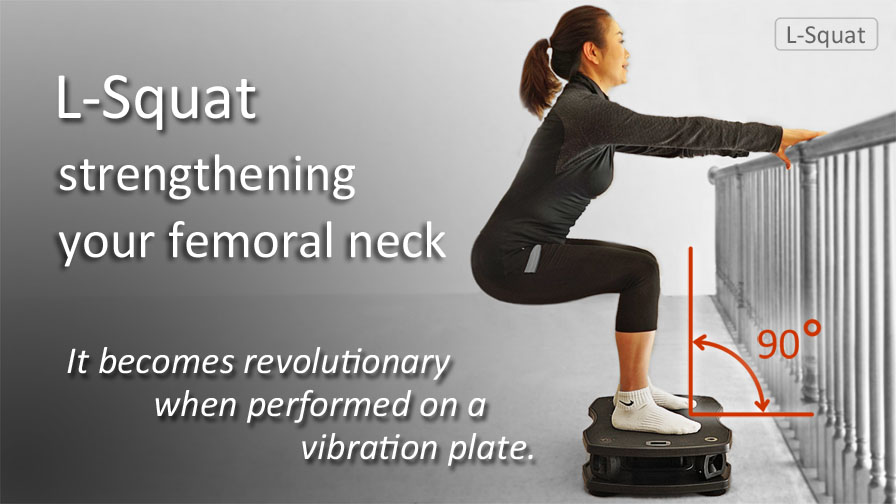
Strengthening Femoral Neck with L-Squat on a Vibration Plate
Due to its small diameter, femoral neck is vulnerable to physical impact, especially for people with bone loss condition.
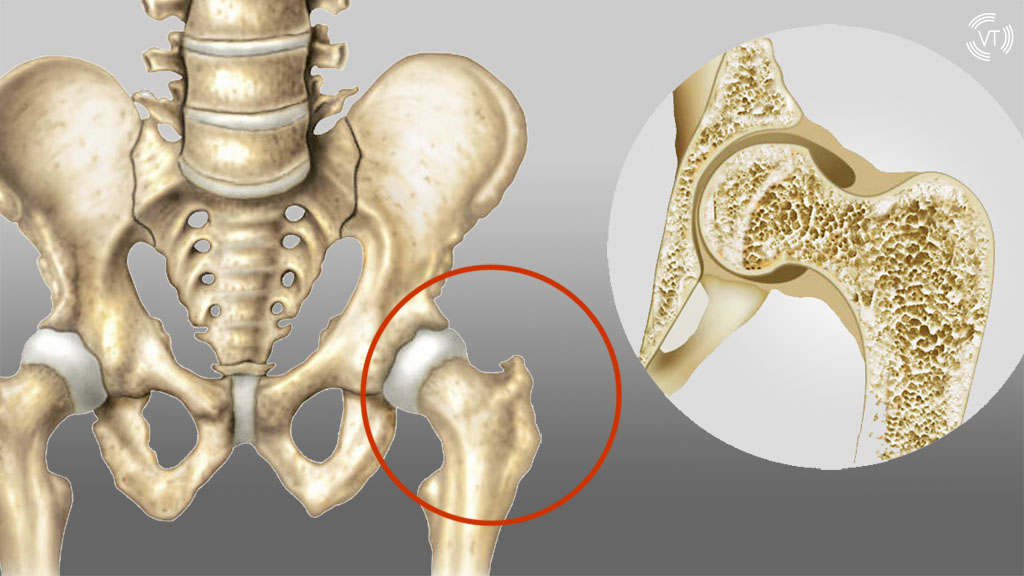
About half of US population aged 50 and above has certain degree of bone loss, conditions from osteopenia to osteoporosis. This population is subject to higher risk of critical femoral neck fracture.
Femoral neck facture may lead to total hip replacement. According to a 2018 statistics by Mayo Clinic, about 2.5 million Americans are living with total hip replacement.
Performing L-squat on a linear vibration plate is probably the most practical exercise for training the major muscles around the hip and stimulate bone growth at the femoral neck.
The rapidly repeated skeletal muscle contraction induced by vibration makes L-squat exercise more efficient and effective.
- Muscle contraction stimulates bone growth
- Insufficient muscle contraction
- Strengthening femoral neck with L‑squat on vibration plate
- Tips for performing L-squat on vibration plate
- Importance of hip muscles - more than a great looking buttock
Muscle contraction stimulates bone growth
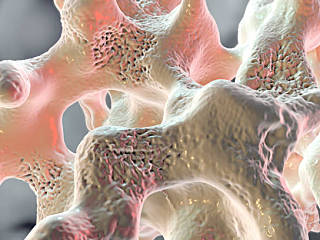
Bone cells constantly break down and are replaced by newly generated bone cells. Mechanical stimulation plays an essential role in bone cell generation.
When we move our body, our skeletal muscles contract and pull the connected bones to the position. This contraction force is the needed mechanical stimulation for promoting bone cell generation.
All physical activities involve muscle contraction. However, effective bone growth stimulation requires the muscle contraction to achieve a certain magnitude.
Scientist have observed that muscle strength training is much more effective for stimulating bone growth than other forms of physical exercises. This is because muscle strength training engages higher magnitude muscle contraction.
Using a vibration plate, you may achieve a high magnitude muscle contraction with a unique pattern. The rapidly repeated intensive muscle contraction induced by vibration may be more effective for stimulating bone generation.
Insufficient muscle contraction
As we age, our bone generation process slows down. It becomes more important for us to keep a certain degree of physical activities (muscle contraction) for stimulating bone growth.
However, many senior people don't maintain sufficient physical exercise. Muscle strength training, which is essential for bone health, is often neglected.
Hip muscle training is mostly ignored in particular! Hip muscles don't get effectively trained when you just do jogging.
Without sufficient muscle contraction activities, our bones lack mechanical stimulation for bone cell generation. Less bone cells are generated to replace the bone cells broken down. We lose our bone density.
If we don't maintain sufficient exercise for muscles around the hip joint, our femoral necks will have bone loss issue and become porous and fragile, vulnerable to physical impact.
Vibration exercise may be a practical solution to address the insufficient muscle contraction issue.
Strengthening femoral neck with L‑squat on vibration plate
L-squat on a linear vibration plate is probably the best exercise to train the major muscle groups around the hip joint.
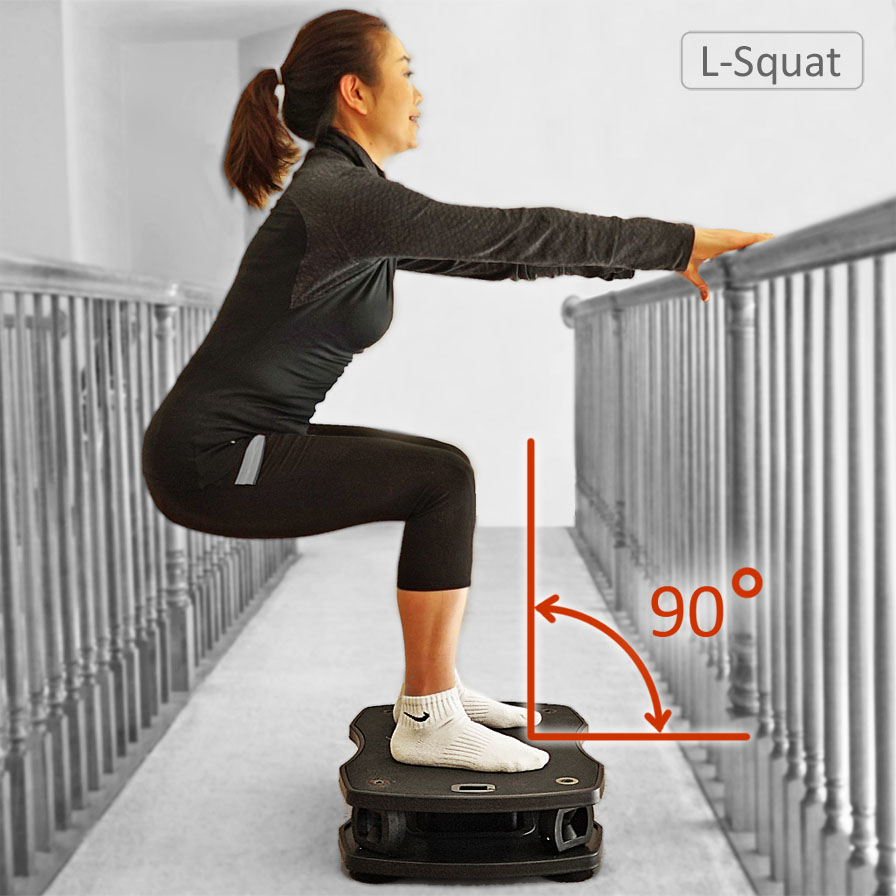
L-squat is a deep squat pose with keeping lower legs vertical to the floor.
You need to pull on a stable handrail for balance and allow your lower legs and the floor to form a 90 degree angle, like an “L”.
L-squat lets you direct tension to muscles around the hip joint without straining the tendons and ligaments around the knee joint.
The major muscle groups engaged in L‑squat exercise are posterior hip muscles, anterior thigh muscles and posterior thigh muscles.
The lower the hip, the more tension is directed towards the posterior hip muscles, and the more muscle strength and effort are required.
If you lack muscle strength around your hip, performing L-squat on a vibration plate is a little challenging.
Without a vibration plate, L-squat is a slow-motion or isometric exercise, not very effective.
On a linear vibration plate, L-Squat becomes a dynamic exercise and effective. The rapidly repeated muscle contraction induced by the vibration engages the muscles around the hip to exercise more intensively.
L-squat on a vibration plate is probably the most effective way to induce muscle contraction around the hip. The muscle contraction produces a dynamic pulling force between femur and pelvis, stimulating bone growth at the femoral neck.
Tips for performing L-squat on vibration plate
Handrail
Performing L-squat, you need a stable handrail to pull on for balance. Place your vibration plate properly away from the handrail for a comfortable reach.
Capital L
It is important to keep your lower legs vertical to form an "L" with the vibration plate, so that you concentrate the muscle tension around your hips without straining the tendons and ligaments around the knee joints.
Keep your back straight
Keep your back straight or even bend backwards to avoid straining the ligaments of your spine. This pose also increases tension on your posterior hip muscles for more effectiveness.
Performing deep L-squat with your back straightened maximizes the training effect on your gluteus maximus muscle and hamstrings.
Adjust the pose to suit your muscle strength
You can adjust your leg curling angle to suit your muscle strength. The lower the hip, the more muscle strength and efforts are required.
Shallow L-squat allows you to direct tension more on anterior thigh muscles.
Deep L-squat allows you direct tension more on posterior thigh muscles and posterior hip muscles (gluteal muscles). It is more challenging.
Beginners can start with shallow L-squat and short exercise session time. As you build up the strength of your hip muscles and thigh muscles, you can progress to deeper L-squat for enhanced exercise results.
Be patient and persistent to achieve your goal.
Slightly up and down
You can move your hips up and down constantly to increase the range of exercise and get multiple layers of muscles trained.
Be conscious about your muscle
Learn to perceive what muscles get worked. That will help you progress.
You should feel muscle tension and rapidly repeated contraction on three major muscles: gluteus maximus muscle (posterior hip), quadriceps femoris muscle (anterior thigh) and hamstrings (posterior thigh). Smaller muscles beneath these major muscles also get exercised.
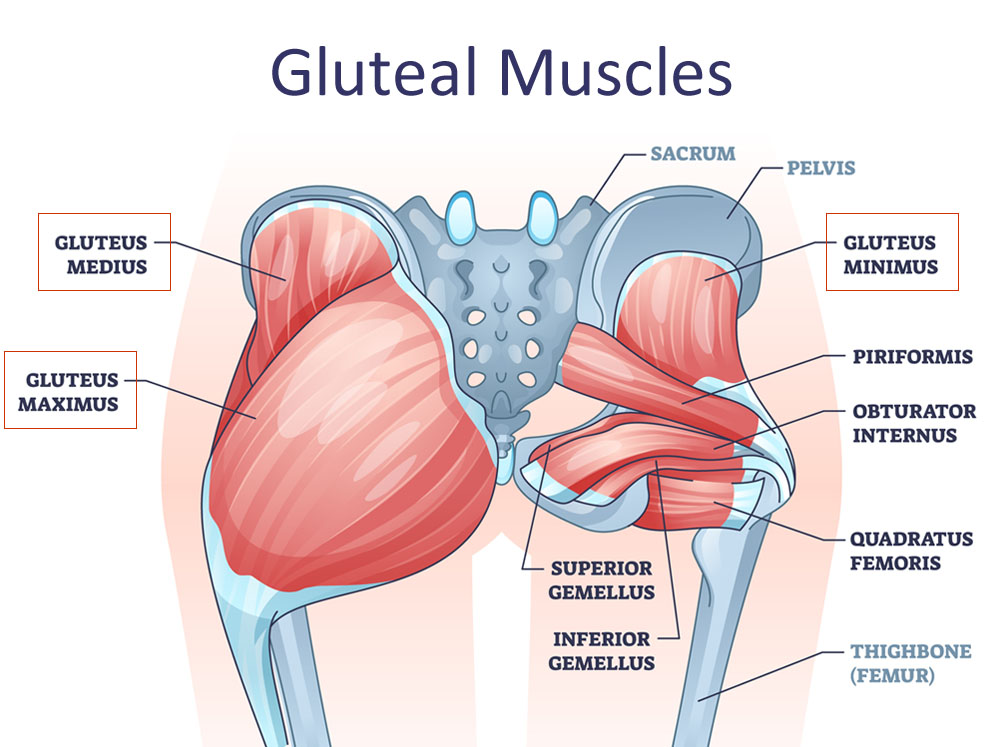
Importance of hip muscles
Hip joint is a very complex multi-axial joint (compared to single-axial knee joint). There are about 17 muscles around a hip joint. These muscles pull the connected bones from many attaching points and angels to stabilize, flex or rotate the hip joint.
Major muscles around the hip attach to femur and pelvis. Some muscles connect femur and vertebrae, and some muscles connect pelvis and tibiae. Understanding the structure and function of the muscles and bones will help you exercise correctly.
Hip muscle training is often neglected but is important for our core strength, mobility, and bone growth.
For people over 50 years old, hip muscle training is necessary for preventing bone loss at the femoral neck.
Vibration L-squat is probably the most effective way to exercise hip muscles and stimulate bone cell generation, for building a strong femoral neck.
Enhanced hip muscles also provide better support to the thin and critical femoral neck.
Once lost, bone density is very difficult to recover.
Prevention is the best strategy.

If building a strong femoral neck is not so appealing, consider shaping a strong and great looking buttock.
Start your L-squat now,
by trying VT007 liner vibration plate.

Do not use a vibration plate if you already have a hip replacement!!!
It is too late!
The replacement femoral neck is a piece of metal. No matter how much stimulation you put on, it will not generate new bone cell.
On the other hand, vibration can loose the bond between the metal part and the bone.
References
- Osteoporosis or Low Bone Mass at the Femur Neck or Lumbar Spine in Older Adults
- Anne C. Looker, PhD | April 2012 | CDC
- How to Increase Femoral Neck Bone Density
- Margaret Martin | Sept. 26, 2017 | Melio Guide
- Effect of 6-month whole body vibration training on hip density, muscle strength, and postural control in postmenopausal women: a randomized controlled pilot study
- By Sabine M P Verschueren, Machteld Roelants, Christophe Delecluse, Stephan Swinnen, Dirk Vanderschueren, Steven Boonen PubMed.gov | PMID 15040822
- Jay Tang
- About
-
Interpreting life science from an engineering perspective.
Featured Posts:
